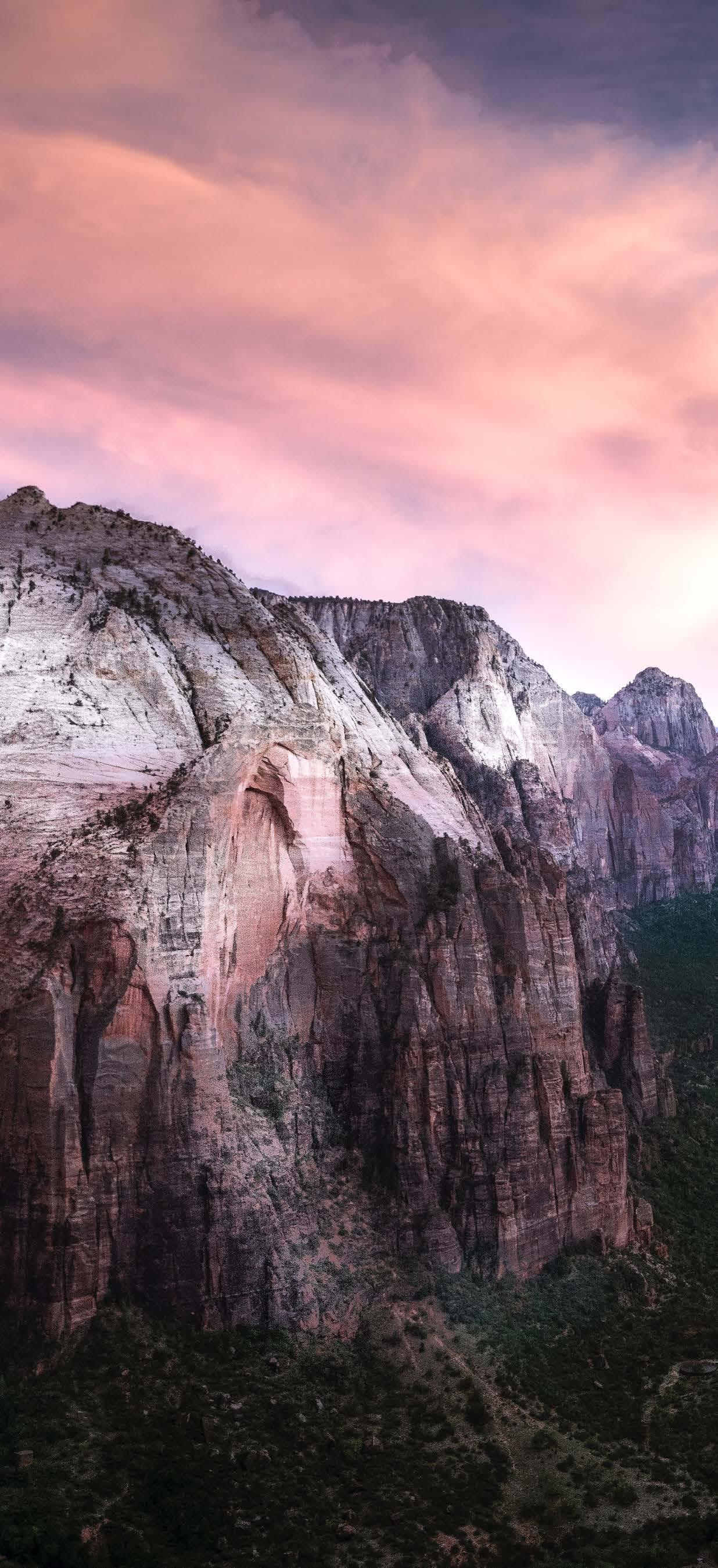
3 minute read
Zion National Park
Recognized for Zion Canyon’s sheer cream, pink and red cliffs and located in southwestern Utah, Zion National Park is the state’s first to receive the designation. Some 12,000 years ago, Zion’s residents tracked mammoths, giant sloths and camels across the region before they died out and Virgin Anasazi — the westernmost Ancestral Puebloan group in the American Southwest — took up farming traditions and the Paiute fine-tuned their lifestyle to desert living. After the settlement of Mormon pioneers, John Wesley Powell expanded his scientific studies here.
Protecting some of the most scenic canyon country in the United States, Zion’s 32 square miles (about the area of Manhattan) feature high plateaus; narrow, deep, sandstone canyons; the Virgin River; 2,000-foot Navajo Sandstone cliffs; slopes dotted with pines and junipers; and colorful, verdant hanging gardens fed by springs, seeps and waterfalls.

The Flora And Fauna
A place of volcanism; uplifted, tilted and eroded rock layers that form the colorful cliffs of the Grand Staircase; sedimentation; and lithification, which transforms sedimentary deposits into stone, Zion’s elevation ranges from 3,700 to 8,700 feet. This creates an arresting mosaic of habitats — riparian and aquatic; arid grasslands and desert shrubs; pinyon-juniper forests; ponderosa pines; and mixed conifer and aspen forests.
From the western rattlesnake to wild turkeys, gray foxes, mountain lions, porcupines and red-spotted toads, animal diversity abounds. A critical habitat for the Mexican spotted owl, the park also helped revive populations of peregrine falcons and California condors.
The Weather
Prone to wide-ranging weather conditions, including temperature swings between day and night, Zion’s weather varies with elevation. Spring arrives in March and April, with temperatures that differ by 30 F or more, depending on where you are and the time of day, while summers are hot with temperatures that regularly top 100 F. The park is quieter during October and November, when fall colors begin to make an appearance and cooler weather sets in. Meanwhile, the winter months — December, January and February — bring solitude, cold and the potential for snow, falling ice and road closures.
Follow the weather, trail, wilderness, water and road conditions on the park’s website.
THE HIKES, DRIVES AND VIEWPOINTS
ANGEL’S LANDING TRAIL
A permit is required to access the difficult, highly technical 5.4-mile Angel’s Landing Trail, the most spectacular in Zion and one of the most bucket list-worthy in the world. Using a chain railing in most — but not all — of the sheer drop-offs, the hike ascends roughly 1,500 vertical feet along the narrow fin of stone that tops at an elevation of 5,790 feet (about twice the height of the Burj Khalifa, the tallest building in the world). Bring nerves of steel and a deep knowledge of rock-climbing safety as you begin at the Grotto Trailhead, .6 miles beyond Zion Lodge on Zion Canyon, following a series of cunning switchbacks — called Walter’s Wiggles — before the vertical push begins.

Zion Narrows Riverwalk
The 1.9-mile, out-and-back Zion Narrows Riverwalk is an essential, family-friendly park experience that starts at the Temple of Sinawava — the eighth and last shuttle stop in the park. It follows the Virgin River for discoveries of lush hanging gardens and trees offset by tall weeping walls. Arriving where more challenging — and famous — The Narrows hike kicks off, you ascend up (and in) the Virgin River with no trail to Big Spring. Should you choose to embark on this strenuous, 10-mile round trip hike, an all-day adventure, consider doing it in late spring and summer when the water is warmer and the level drops.
Note, however, this is also when storms can present flash floods.
Zion Canyon Overlook Trail
Take the 1-mile out-and-back Zion Canyon Overlook Trail, entering the Zion-Mount Carmel Tunnel through wondrous slickrock in the park’s Upper East Canyon. Then, take the trailhead to the great viewpoints, which overlook the main canyon.
Watchman Trail
For impressive views over the southern end of Zion National Park, the relatively easy, 3.1-mile, out-andback Watchman Trail brings you to an outlook over Temples and Towers, lower Zion Canyon, Watchman Peak and Springdale.
Emerald Pool Trail
To reach Lower Emerald Pool, two small streams fed by the surrounding waterfalls, which you walk behind, hop on the 1.2-mile Emerald Pool Trail, which hooks up with the Kayenta, Middle and Upper Emerald Pools trails for a longer, moderate hike (2 miles to middle and 3 miles to upper). Soak up vistas of Lady Mountain, the Great White Throne, Red Arch Mountain and cliffs as far as the eye can see.
Zion Canyon Scenic Drive
To experience the region’s beauty by vehicle, take 54-mile Zion Canyon Scenic Drive, seeing the Virgin River and famous park landmarks, including Angel’s Landing, the Court of the Patriarchs and Twin Brothers Mountain.











